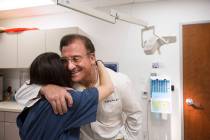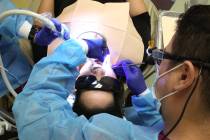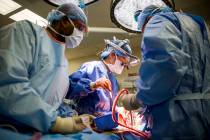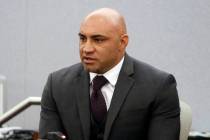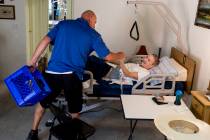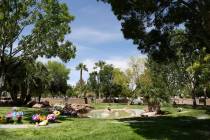Shun sun too much, you’ll lack vitamin D – even in Las Vegas
At first blush, it doesn’t make sense.
We live in Southern Nevada, where the sun shines about 320 days a year, yet it isn’t difficult to find doctors who say many of us are deficient in vitamin D, which is often called the sunshine vitamin.
But then when you really think about how this could be true, it isn’t difficult to explain.
As so often happens in America, many of us take helpful information – prolonged exposure to the sun’s rays can damage skin and cause cancer – and take it to the extreme.
And then too many come to believe that even small amounts of sunshine will harm us.
“Totally shunning the sun is unhealthy,” says Dr. David Park, chair of the primary care department at Touro University Nevada College of Osteopathic Medicine. “Vitamin D deficiency shows up in blood tests and I’d recommend people get them.”
Without vitamin D, the body cannot properly absorb calcium, and bones become fragile. In February, researchers found that among 889 adult patients treated for a fracture in Missouri, blood levels of vitamin D were “insufficient” in 78 percent and “frankly deficient” in 39 percent.
While the Institute of Medicine has deemed vitamin D serum levels of 20 nanograms per milliliter to be adequate, many researchers now believe the minimum level should be 30 nanograms. And levels between 40 and 60 nanograms per milliliter are considered even more desirable by a growing number of clinicians.
The debate over how much D is enough has become far more heated since recent research has linked getting more vitamin D not only to healthy bones but also to a lowered risk of heart disease, diabetes, cancer and hypertension.
Not surprisingly, sales zoomed for vitamin D supplements, jumping from $30 million in 2008 to $125 million in 2010. Also not surprisingly, there are doctors who say taking too many supplements can be toxic.
The Institute of Health’s recommended daily dietary allowance of vitamin D is 600 international units for ages 1-70 and 800 IU for adults older than 70. The safe upper limit, which some scientists recommend daily, is 4,000 IU.
No large-scale randomized controlled clinical trials prove or disprove the value of vitamin D supplementation beyond bone health – excitement about D’s other benefits come largely from studies of animals.
But many clinicians believe a trial of 20,000 men and women that is now under way will show that vitamin D supplements lower the risk of cancer, heart disease and stroke.
Las Vegas internist Dr. Ivan Goldsmith, who argues that a vitamin D level of 60 nanograms per milliliter fosters good health, notes that humans spend less time in the sun today than at any point in human history – yet humans still make 90 percent of their vitamin D from exposure to the sun, with the rest of the D coming from natural or fortified foods .
Goldsmith says he’s found patients with hypertension, obesity and diabetes to be vitamin D deficient.
Both Goldsmith and Park give prescribed doses of D to patients who they find deficient.
“I often find people who have back and joint pain to be deficient,” said Park, who prefers that his patients have D serum levels of 40 nanograms.
There would be little concern over vitamin D deficiency among Southern Nevadans, Park says, if we’d follow a simple routine.
“If people got up to 30 minutes of sun on much of their bodies each day – without sunscreen and before 10 a.m. and after 5 p.m. in the hottest months – we’d be in good shape,” he said.
Paul Harasim is the medical reporter for the Las Vegas Review-Journal. His column appears Mondays. Harasim can be reached at pharasim@reviewjournal.com or 702-387-2908.



